Guimarães is a city with a glorious historical past. Its history is connected to the foundation of the Portuguese national identity and the Portuguese language, way back in the 12th century. The city has preserved its past as hometown of Dom Afonso Henriques, the first King of Portugal who was born in 1110. Also in this same location, the King has begun the offensive quest against the Moors. Guimarães has an impressive historical centre with a unique architecture, a labyrinth of narrow streets and picturesque squares surrounded with medieval buildings. The whole historical centre has been classified as “World Heritage” by UNESCO in 2001 and is therefore included in their list of world heritage sites.
However, this town stands out not only for its historical treasures: it is also home to museums, plazas filled with cafés and restaurants with an extraordinary atmosphere. Furthermore, Guimarães is a “College City” and its students bring life to the entire region. Important to highlight is the celebration of youth’s “Gualterianas and City Festivities” where an ancient market is held, with popular dances, rock concerts, fireworks, parades and bullfighting.
The city also gains a special environment during the “Afonsina Festivities”: a medieval market taking place in June. In November, one of country’s biggest Jazz festivals, with a duration of three weeks is performed, also in Guimarães. Some mandatory visiting places for those passing by through this city are: Palace of Duques de Bragança, Castle of Guimarães, Church of São Miguel do Castelo, Praça São Tiago, Gardens of the Palace of Vila Flor, Nossa Senhora da Oliveira Church, São Francisco Church , São Gualter Church , Alberto Sampaio Museum and the Martins Sarmento Archeological Museum.
A little further away from the city centre, the cascading gardens with Summer Houses and rocaille decoration, at the Vila Flor Palace and Cultural Centre, are well worth a visit; as is the Baroque Church of Nossa Senhora da Consolação e dos Santos Passos at the far end of Largo da República do Brasil.
For another view of the city you can go up in the cable car to Monte da Penha, to enjoy one of the most beautiful panoramas in the north of Portugal, where you will find the Shrine of Our Lady of Penha. Discover what to see and do and the best places to visit in Guimarães!
1. Castle of Guimarães
The castle´s presence evokes the exciting mixture of legend, poetry and heroism that surrounds the beginning of Portuguese history. On this Monte Largo (Broad Hill) – referred to as alpis latitus in the Latin documents of the time – the nucleus of the future nation of Portugal was first developed. In circa 968, Mumadona, the countess of Galicia, ordered a castle to be built on this site, where the population could seek refuge from the constant attacks unleashed upon them by the hordes of Vikings, who arrived by sea from the north of Europe, and the Muslims, who made raids from the territories that they occupied to the south.
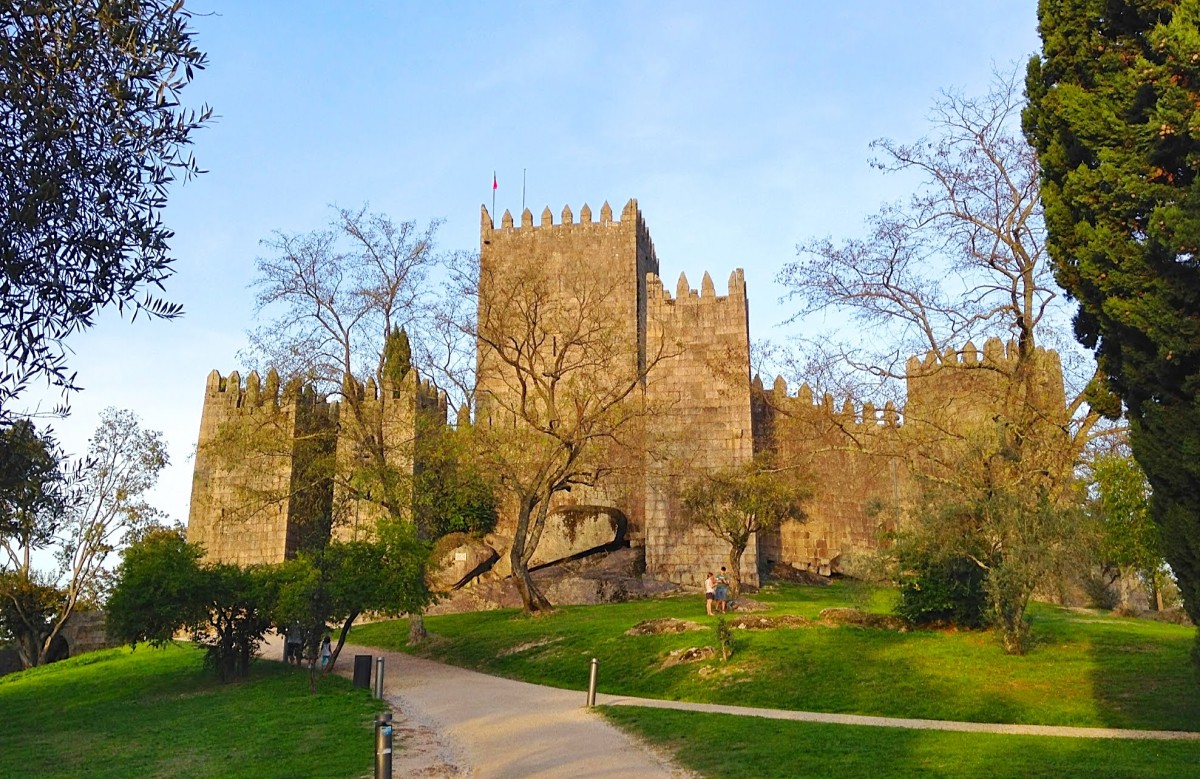
On taking over the governorship of the province known as Portucalense from his father-in-law, Alfonso VI of León, Count Henry ordered another larger and more solid construction to be built. This represented the beginning of the important defensive structure that we can now see today, dominated by the square keep that stands between the four towers guarding each of the four corners of the walls. Although this is not strictly documented, it is very likely that the building that stands against the inner part of the northern wall was the residence of Count Henry and the birthplace of his son Afonso Henriques, the first king of Portugal.
2. Palace of Duques de Bragança
The Palace of Duques de Bragança is located above the historic center of the city of Guimarães, in the North of Portugal. Its construction dates back to the VX century, ordered by Dom Afonso (illegitimate son of Don João and Lady Inês Pires Esteves), 1º Duke of the House Bragança and 8º Count of Barcelos. Its towers and cylindrical chimneys stand out from almost any point of view of the historic center.
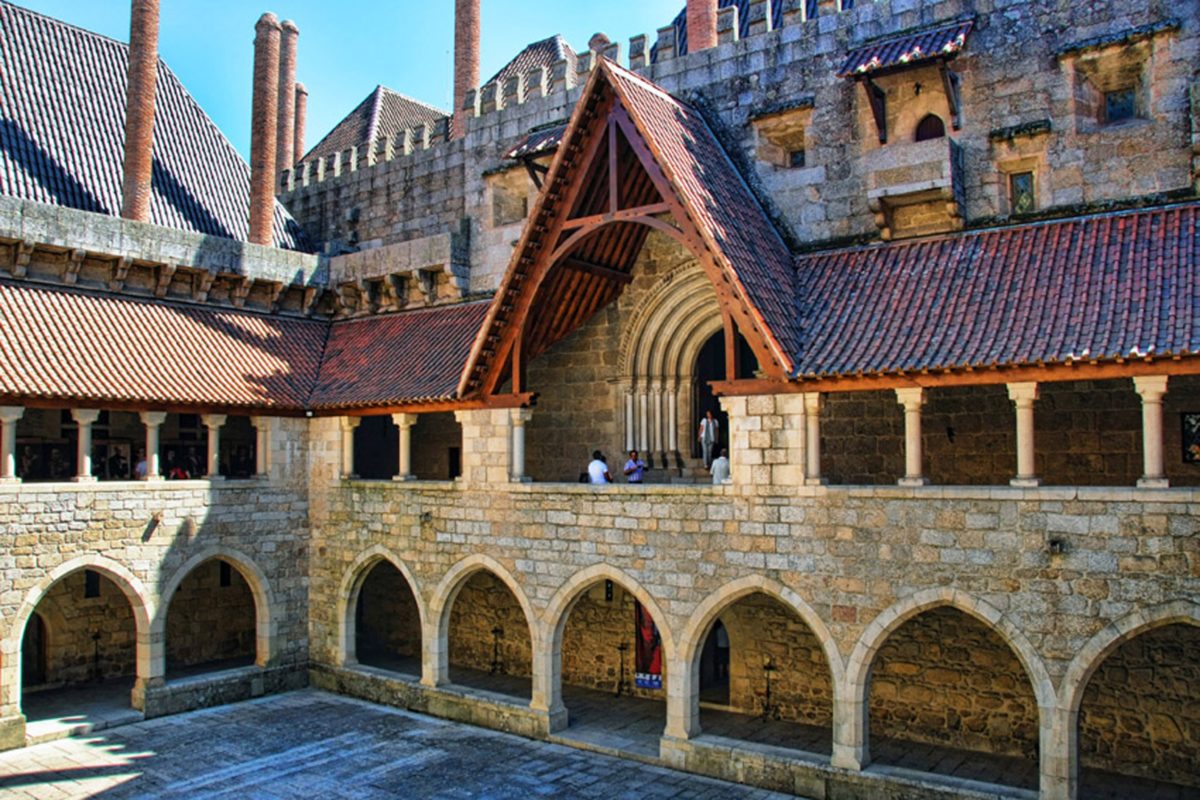
The palace suffered an intense deterioration for some centuries, as the supreme family that lived there moved to Vila Viçosa, in Alentejo. This building was then fully restored in order to be used as a presidential residence for Salazar. Nowadays, it still retains many of its original relics. When visiting the Palace you can see many of its rooms and observe their Flemish tapestries and ancient weapons (15th and 16th centuries). And still inside the Palace, you can admire a chapel with stunning stained glass windows.
3. Old town of Guimarães
According to legend, in this land was born in 1109, the first king of Portugal, D. Afonso Henriques, at a time when Guimarães was a small medieval urban settlement protected by a castle of stone and wood. The urban agglomeration inside the walls was changing throughout the Middle Ages, to stabilize and homogenize in the eighteenth century. And there can be no better way to appreciate an ancient city than to understand it as a “set” sedimented in time. In fact, more than of monumentality, in Guimarães one can speak of an “atmosphere” created by the sombre roughness of the granite, contrasting with the vivid colors of the plaster.
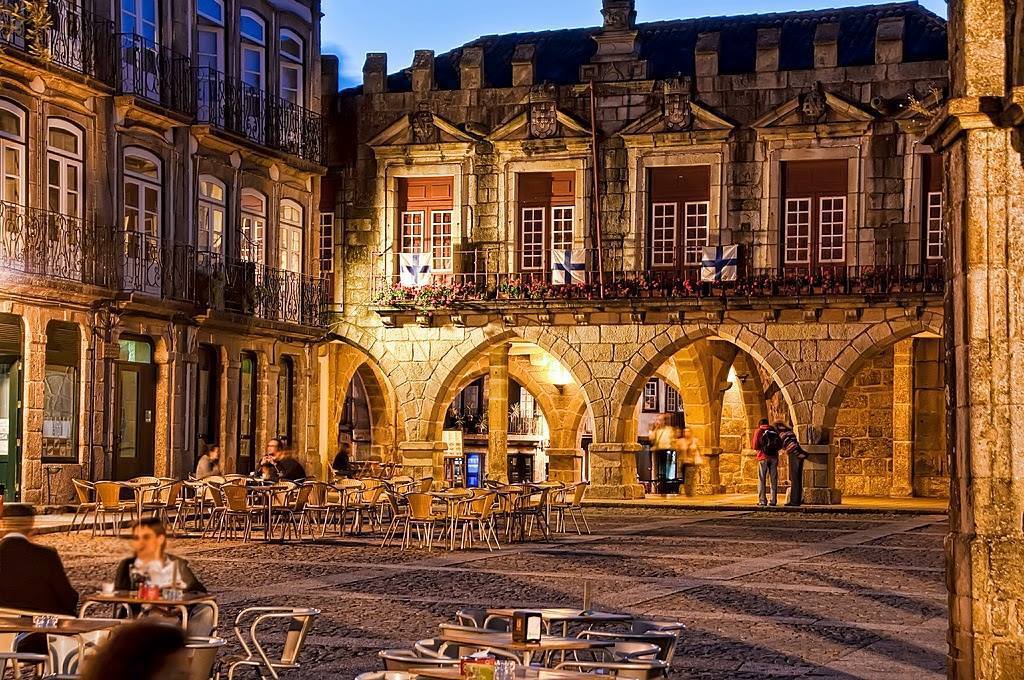
This atmosphere is marked by emblematic monuments for the history of Portugal – to the point where Guimarães has become one of the largest national “places of memory” – such as the Castle (XII-XIII century) and the Palace of the Dukes of Bragança (15th century ). In the 21st century, Guimarães gained a new dimension and added new spaces and cultural facilities, presents a strong and contemporary cultural agenda and offers unique and surprising experiences to the inhabitants and visitors. Guimarães combines harmonious and unique memory and tradition with openness, cosmopolitanism and contemporaneity.
4. Citânia de Briteiros
From the second millennium BC, the northwest of the Iberian Peninsula was populated by human communities organized in tribes that inhabited elevated places that was given the name of “castros”. Due to the similarity of the settlement built in several different points, it can be said that a “military culture” was developed in this area, from the Portuguese Minho to Galicia and Spanish Asturias, which reached its apogee in the 19th century. II a.C., and of which Citânia de Briteiros is one of the most significant examples. The fact that these cities are located in high points of the territory allowed the populations to defend themselves better of the intruders and to observe the movements strange to the community, which explains that, despite the romanization, some only disappeared in the century. V d.C., when the peninsula was invaded by peoples of northern Europe.
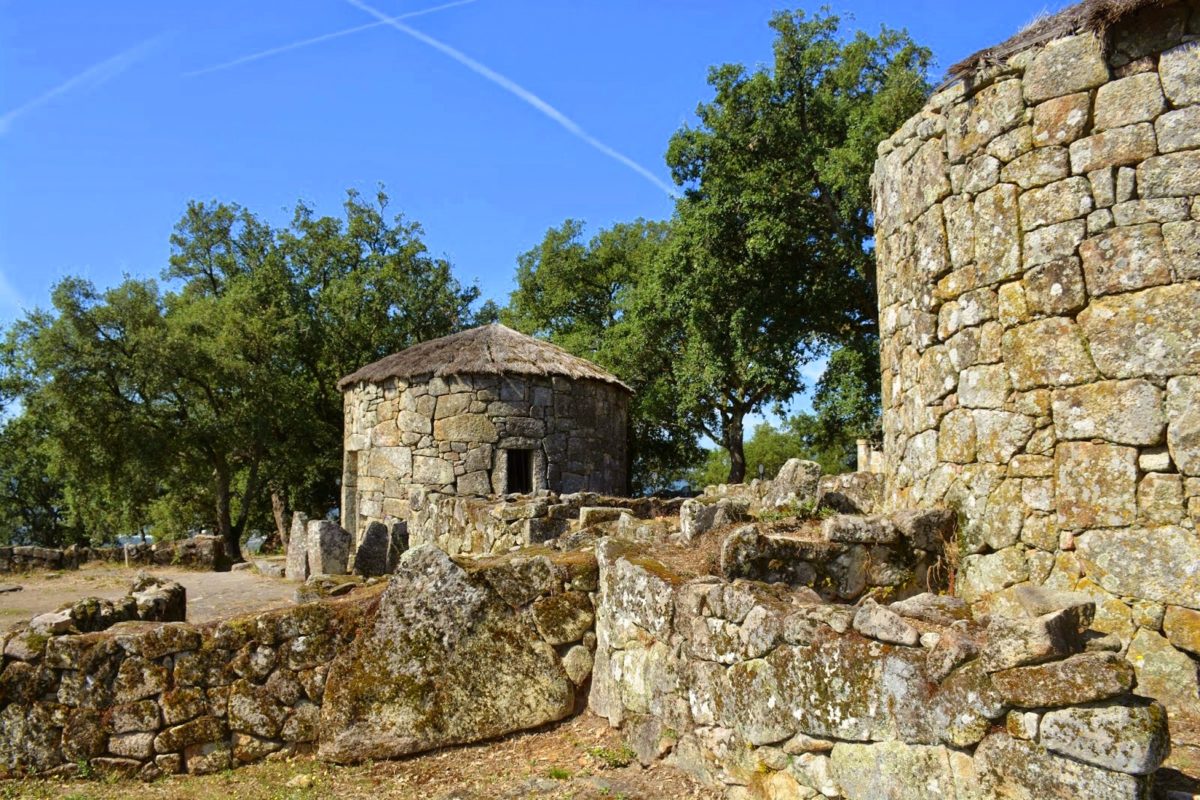
Located a few kilometers from Guimarães, on the top of the hill of São Romão on the magnificent valley of the River Ave, Citânia de Briteiros will surprise the visitor, both for its scenic beauty and for the vestiges left by these our forefathers of protohistory. On the site, we can see the still incipient features of the organization of a “city” in the streets protected by a set of walls that surrounder the houses in circular or rectangular plan arranged sometimes in small “blocks”, including dens for the cattle. One of the most significant monuments in the Citania was discovered in 1930, when the road leading to the hill was opened. This is a crematory where the furnace’s façade consists of a pentagonal stele showing the incision of two swastikas with curved arms, with an opening in a hemicycle for the passage of the body.
5. Church of Nossa Senhora da Oliveira
The Igreja de Nossa Senhora da Oliveira dates from the end of the 14th century and was designed by the master builder Garcia de Toledo. Its building was commissioned by the king Dom João I in fulfilment of a vow that he had made to the Virgin Mary in gratitude for his victory at the Battle of Aljubarrota. In a tower annexed to the church and dating from 1513, when it was rebuilt by the Prior Dom Diogo Pinheiro, is the burial chapel of his parents.
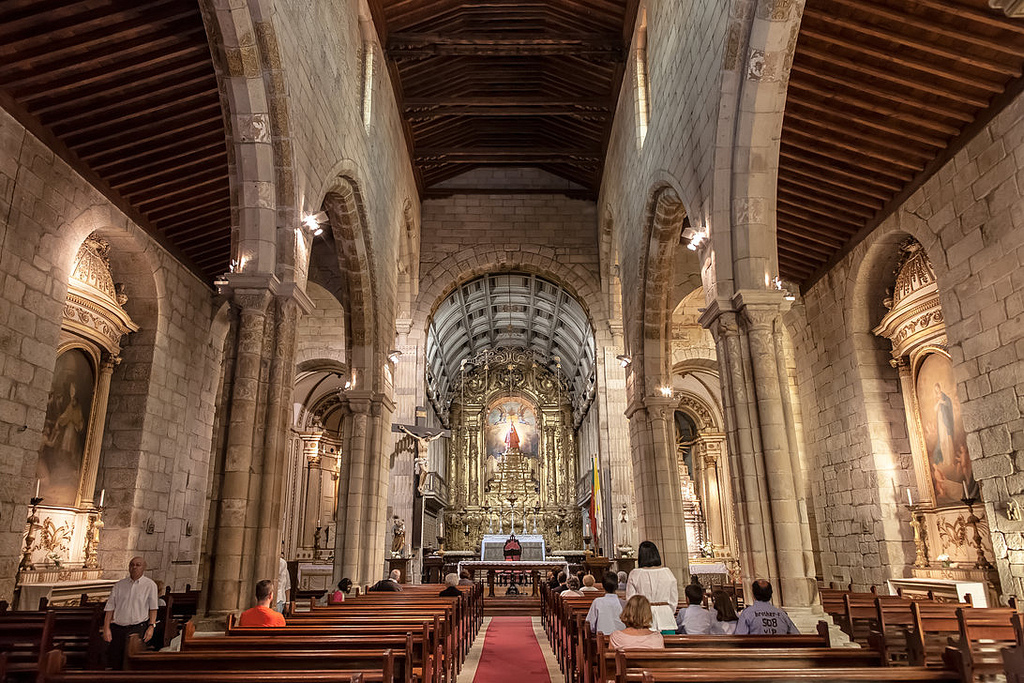
At the end of the 17th century, Dom Pedro II ordered the chancel to be enlarged and his royal coat of arms can be seen on its vaulted ceiling. Inside the church, attention is drawn to the high altarpiece, dating from the second half of the 18th century, the 17th-century choir stalls with their neo-classical backs and the silver altar of the Capela do Santíssimo Sacramento (Chapel of the Holy Sacrament).
6. Square of Santiago
A very old square, referred to over time in various documents, still preserves the medieval moth. According to tradition, an image of the Virgin Mary was brought to Guimarães by the apostle Santiago, and placed in a pagan Temple, dedicated to Ceres, in a square that was renamed Santiago Square. It was in its vicinity that the Franks who came to Portugal settled in the company of Count Henry.
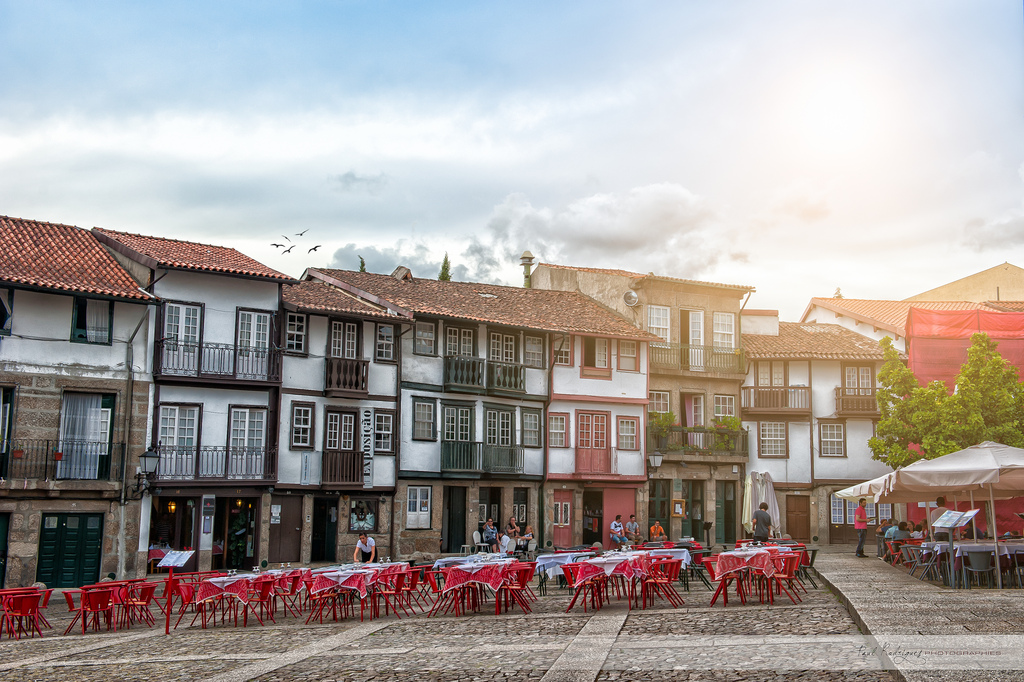
Count Henry granted permission to build a chapel dedicated to the apostle. In fact, here was a small chapel from the 16th century dedicated to Santiago, that was demolished at the end of the century. XIX. An intervention made in the early 1990s restored to this space the medieval and sixteenth-century physiognomy that characterize it. Every year there are medieval or 16th-century fairs.
7. Square of Oliveira
Largo da Oliveira was, for centuries, the heart of the town of Guimarães and many Kings, nobles and priors of the Collegiate, left there the mark of their personality and their zeal. It is well known the history of the monuments that frame this modest square that, in previous centuries, saw a sharp style of porched houses filled, from the first floors, with wooden borders protected by stucco, that the course of the years was degrading and forcing to changes … On the nascent side, the church of Nossa Senhora da Oliveira is based on foundations of a primitive monastery, built in the ninth century. The Countess of Mumadona founded this Monastery, dedicated to Santa Maria de Guimarães, wich was rebuilt by the Count D. Henrique and was instituted in Collegiate by the first King of Portugal D. Afonso Henriques.
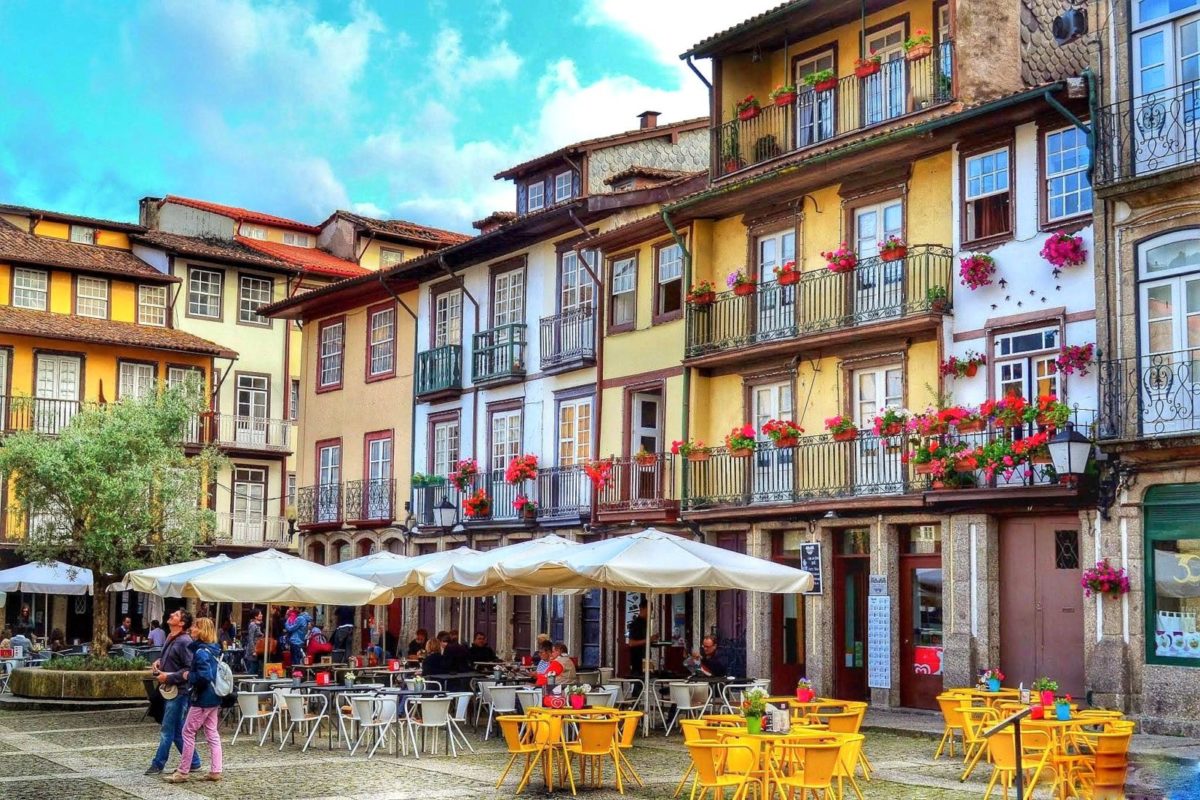
Further on we come across with the Padrão do Salado, a gothic porch erected in the reign of D. Afonso IV to commemorate the Battle of Salado in 1340. The “triumphal arch” of Guimarães is also in this square, that is, the old Paços do Concelho. This arched building began in the reign of King John I in the 14th century and was remodeled in the 17th century. The Museum of Modern Primitive Art currently operates in the Town Hall. Passing the cloisters of the Council Houses, where several vendors of various articles were extended, we arrived at the Square de Santiago. Here, it is a crime not to stop at one of the esplanades to enjoy a drink and to listen to the sound of everything that goes on and on … Everything is extremely well treated: at times, the city looks like a toy and we are part of it.
8. Penha Sanctuary
This mountain is the highest point in the area (approximately 617 meters above sea level) and is located 7 km from the historic center of Guimarães, in the North of Portugal. This wooded peak is the ideal place for a break from the city and the heat in summer. The landscape presents huge boulders covered in flowers, where children can play safely. Also there is in the area hidden caves to explore. The area is endowed with excellent infrastructure and facilities such as: an equestrian center, picnic areas, restaurants, bars, cafes, mini-golf, trails, etc…
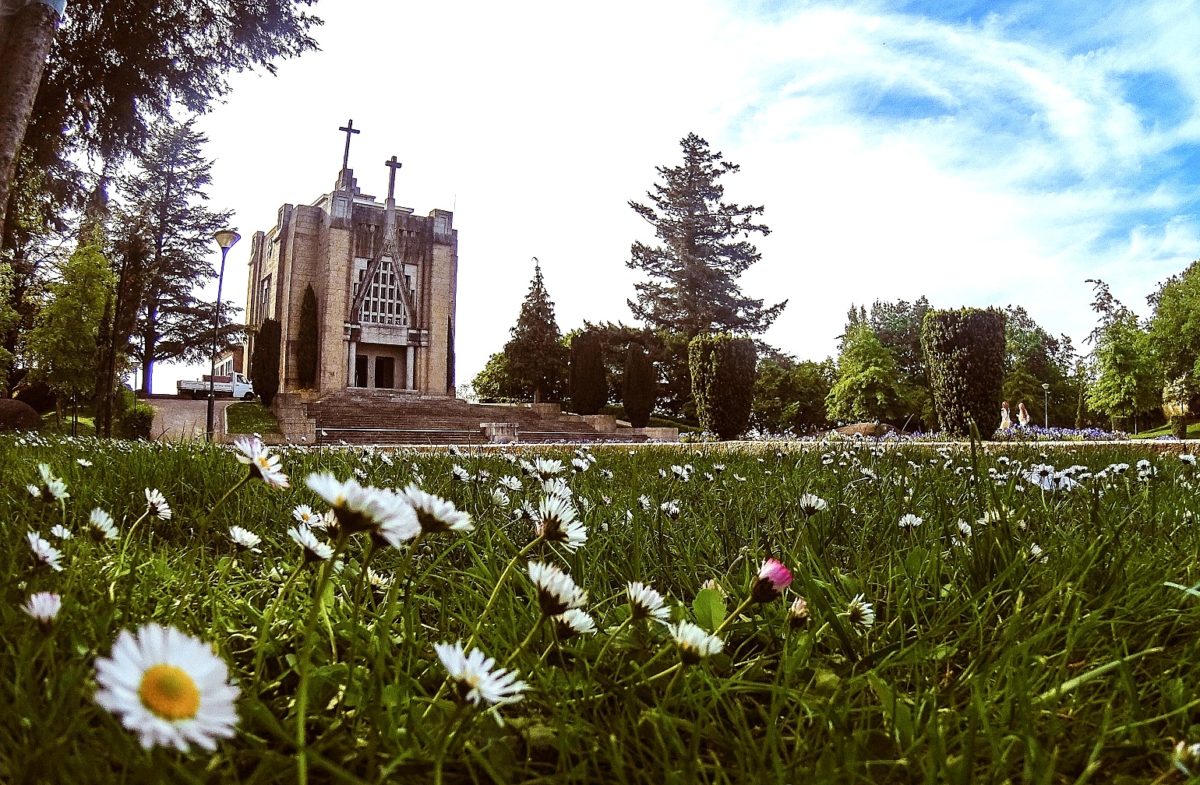
To reach the location you have two options: follow a paved and winding road or through a former ski lift that departs from of Parque das Hortas, 600 metres from the historic center of Guimarães. (Price 4,50€. Schedules: Monday to Friday from 10:00am – 7:00pm; from Saturday to Sunday 10:00 at 20:00 h.) You can also travel by bus, careers 51 or 52, but they are not frequent. Relatively close (about the 1.5 km of the mountain) you’ll find the Mosteiro de Santa Marinha da Costa, also an interesting place to visit!
9. Padrão do Salado
The church of N. S. Oliveira has in front of the main door a historical monument that is unique in the country, due to its shape and its architecture. The Padrão do Salado was ordered to be raised in the year 1342 by our King D. Afonso IV, to commemorate the Portuguese participation in the Battle of Salado. It is a monument full of beauty, a stone vault, supported by four arches in ogive that in turn rest in four columns or pedestals, plowed and framed in the Roman style. Over these arches are those wedge or needle-shaped triangular elevations that give the monument its peculiar and interesting aspect.
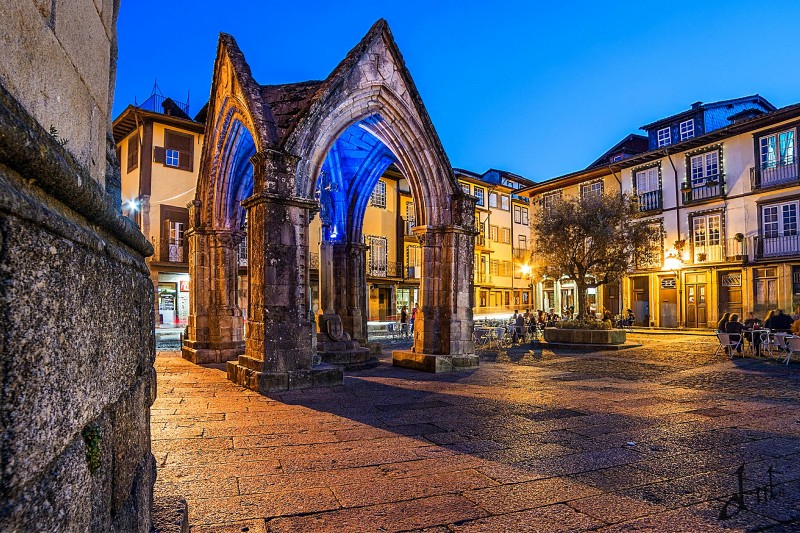
At the apex of the arches, the arms of King Afonso IV are engraved on each of the walls. Maria Adelaide Pereira de Morais says in the book (Guimarães Lands of Santa Maria) that in the middle of the Padrão do Salado rises a cruise in gold and poly chrome limestone, offered in 1342 by a Vimaranian dealer. At the base of the cruise, on the north side, there is a shield of the Portuguese royal arms. This standard was considered a second-class historical monument by the Association of Portuguese Civil Architects and Archaeologists at the General Assembly on December 30, 1880. Each year, on August 14, the Chamber celebrates the procession commemorating the Battle of Aljubarrota.
10. Church of São Miguel do Castelo
This Romanesque-style church is located between the Castle and the Palace of Duques de Bragança, Guimarães, in the North of Portugal. This is the Church where King Afonso Henriques was baptized, the proof can be seen next to the baptismal font in a tombstone with the inscription “in this font was baptized the King D. Afonso Henriques by Archbishop S. Geraldo in the year of our Lord 1106.”
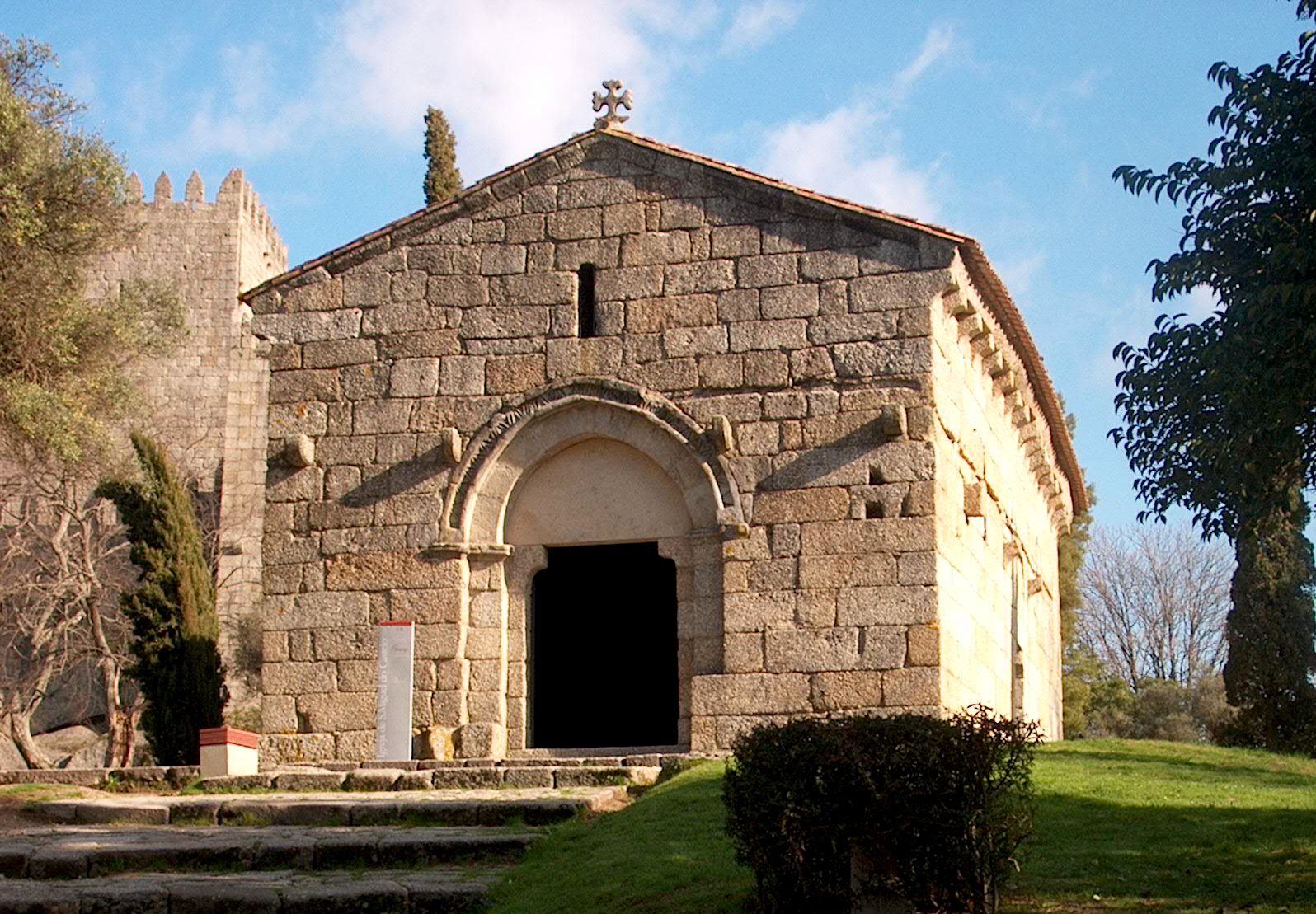
Although it is a simplistic construction, with no major decorations, it’s considered a national interest monument since 1910. This is due the fact that its construction is intimately associated with the Portuguese nationality and to its foundation. It houses a collection of tombstones with different symbols and several representations of religious warriors, a polychrome wood sculpture of S. Miguel (the patron saint of the Church) and a sculpture of the Virgin and Child, done in polychrome limestone.
11. Church of Santos Passos
Originally built in a tiny chapel, erected in 1594, the 18th century Church of the Saints Passos, better known as the Church of Saint Gualter, is the last work of the architect André Soares, master of the baroque and rococo. These two artistic styles coexist harmoniously in this church, raised from its surroundings by a platform that allows it to dominate the front square and mark its southern limit in dialogue with the historical center, its northern limit.
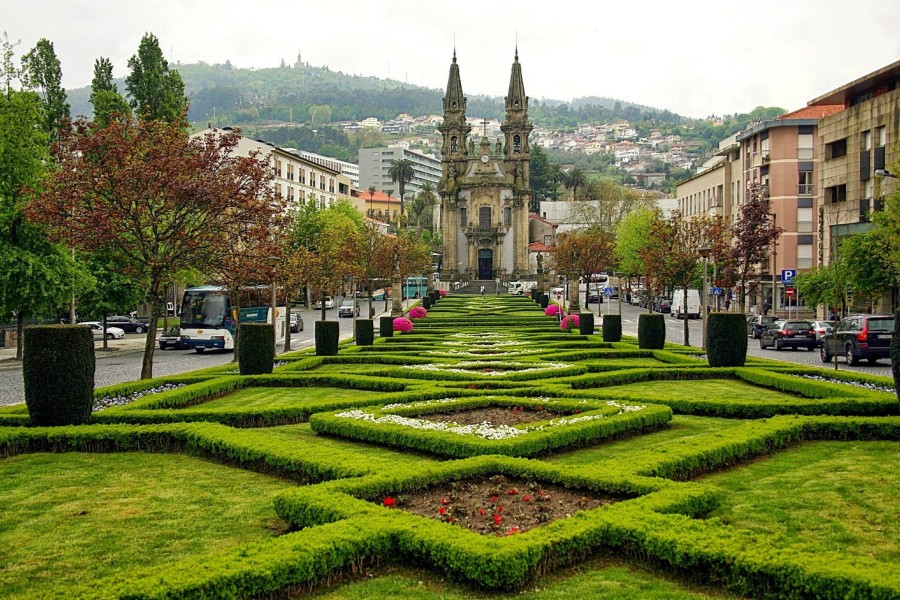
Accessing a staircase decorated with balusters, one can admire the interaction of the staircase with the façade and the details of geometric games of volumes, curves and plans and the statues that give it a character and dynamism of its own. But this harmony would be disturbed by the assemblage of various strange elements such as the tile-covered façade, a clock and two towers strange to the whole. These two towers, authored by Pedro Ferreira, dating from the 1860s would make this set disproportionate and heavy in stark contrast to the delicate previous balance.
12. Santo António dos Capuchos Museum and Convent
The Museum Path in the Convent of Santo António dos Capuchos was created by the Holy House of Mercy of Guimarães in 2008, as a result of the concern for the conservation and valorization of its artistic and cultural heritage. Situated in the heart of the Sacred Hill, it occupies the space of the building built as a convent in the 17th century and bought by the Misericórdia Institution in 1842 to install his Hospital there.
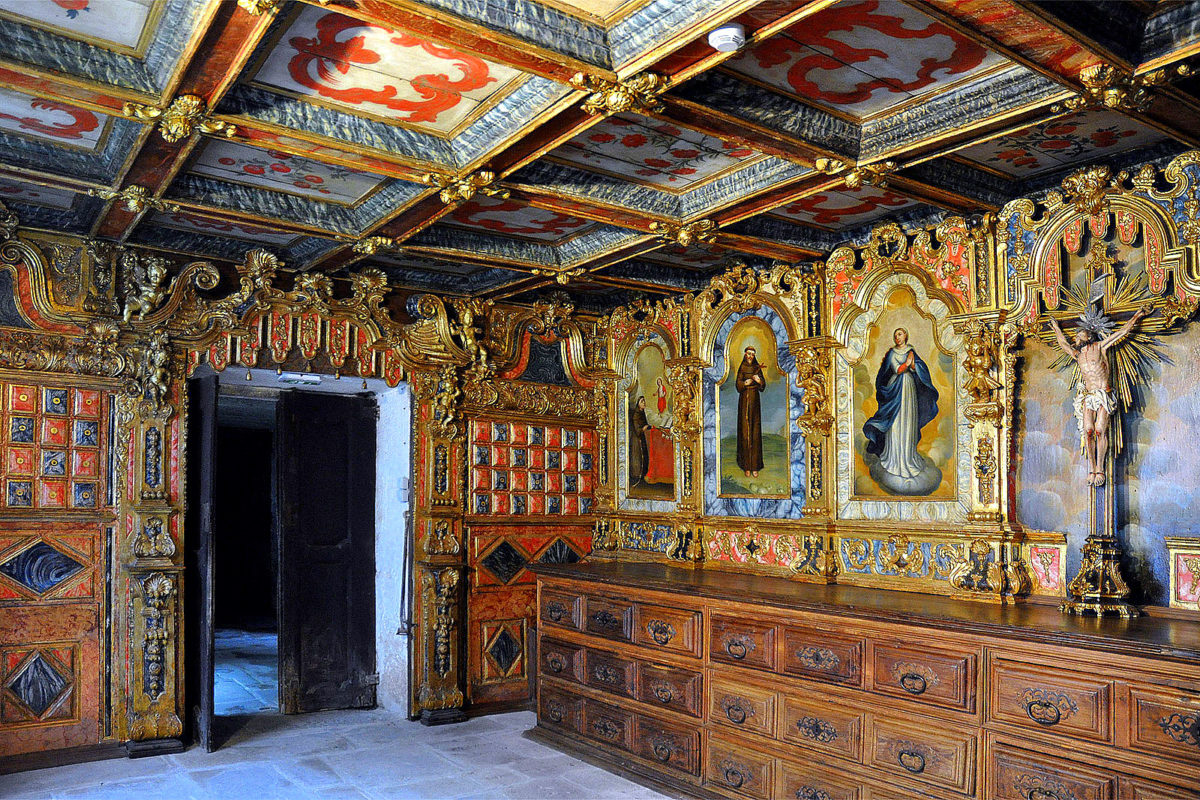
Some of the Institution’s movable heritage is exhibited, while visitors are invited to walk through the corridors, courtyards and cloister of the imposing building, as well as visit the convent church and its magnificent sacristy from the 18th century.
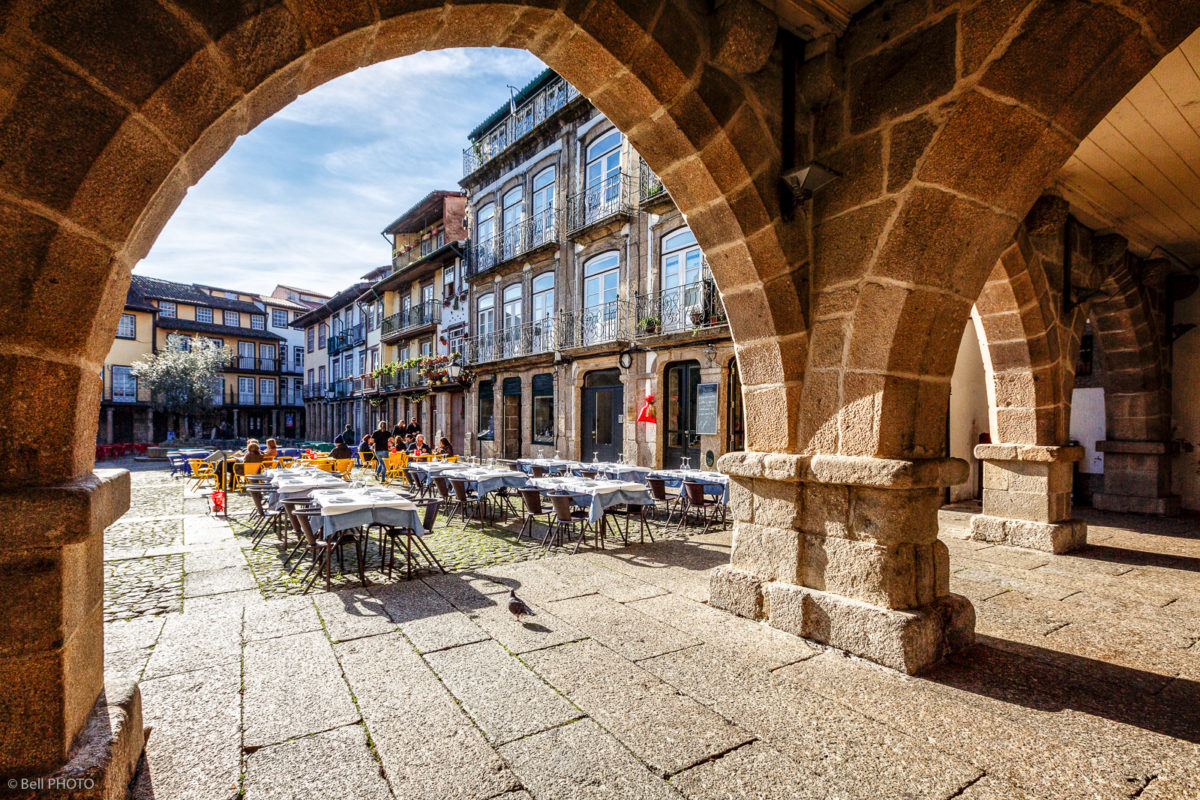

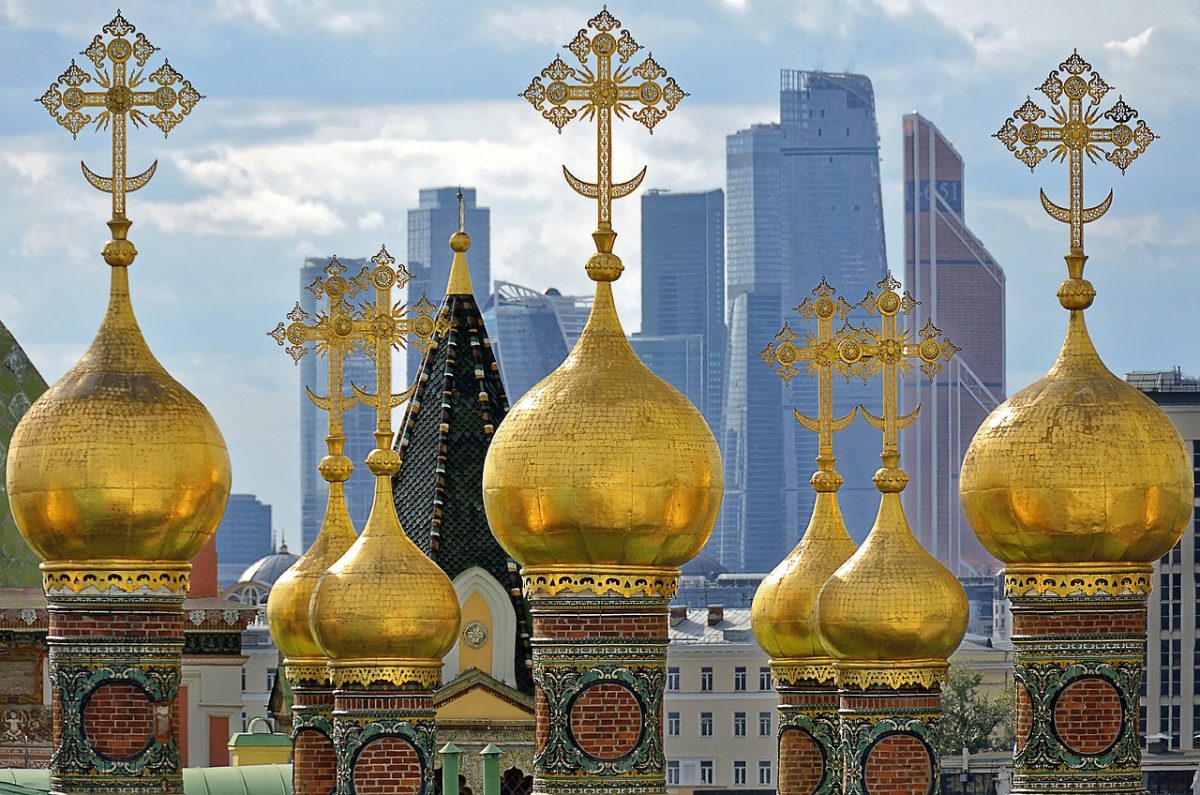




Guimaraes is a stunning city that is definitely worth stopping at if you’re travelling through Northern Portugal